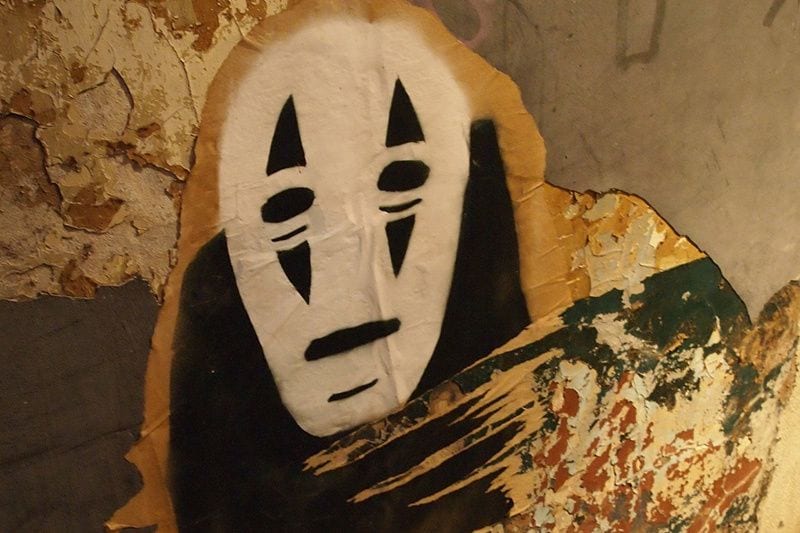
Of all the English-language books to be written on the tragic 2011 Tohoku earthquake and tsunami, Richard Lloyd Parry‘s Ghosts of the Tsunami is unquestionably one of the best. Not that one can really compare works on the topic. The magnitude 9 earthquake which struck the Pacific coast off Japan on 11 March 2011 generated a tsunami of record proportions that struck the Tohoku coast less than an hour later. The triple disaster (meltdowns at three nuclear power plants were also triggered) resulted in over 18,000 deaths.
The outpouring of literature and creative productions of all sorts in the wake of these tragic events have generated a vast number of incredibly powerful and important works. Yet when it comes to English-language literature on the tragedy, Parry’s Ghosts of the Tsunami achieves unparalleled heights of power and poignancy.
It offers a uniquely riveting telling of the tragedy, which retains respect for its subject matter without sacrificing precision or focus. The result, which lies somewhere between reportage and investigative reporting, easily ranks as one of the best accomplishments of journalistic narrative this century. The level of detail is astonishing, and clearly the product of tremendous in-depth interviewing. Parry is able to offer minute-by-minute accounts, fleshed out from multiple perspectives (he also gives credit to Japanese reporter Masaki Ikegami, who conducted considerable investigative reporting on which Parry came to rely).
At the centre of this particular story is the tragedy of Okawa Elementary School, a school in Ishinomaki, Miyagi Prefecture, where 74 schoolchildren, along with almost all of their teachers, were killed by the tsunami. In several respects, the tragedy at Okawa is no different from the manifold tragedies visited elsewhere along the Tohoku coast, and Parry offers this broader perspective as well, drawing on multiple survivor stories to help the reader form a broad understanding of the devastation wrought by the tsunami. Yet the Okawa tragedy was also unique in that it was the only school where almost the entire student population was lost to the tsunami.
Moreover, it was a loss that could have been averted. The teachers dithered and couldn’t decide what to do following the initial earthquake; they’d had plenty of time to evacuate and reach higher ground, yet failed to do so. A few students were rescued by parents who whisked them away while the teachers dithered and debated; a small number survived the wave when it arrived. But the overwhelming majority did not. Parry investigates what happened at this school, and follows the quest of the bereaved parents both to find the remains of their drowned children, and then later to hold the school board and city to account, to find out what went wrong and seek justice in the courts. It’s a riveting, page-turning tale, yet also a poignant and tragic one.
It’s the sort of story that’s only possible to write with time and distance. The survivors he interviews have clearly had time to sift through events in their memories and psyches; have had time to come to terms with what has happened and to decide they want their tales told. It doesn’t mean their sense of pain, loss and anguish is any diminished, but there is a dogged recognition of the value of sharing their story with an earnest and sympathetic journalist, the sort of recognition which only becomes possible with the vantage of time.
On a broader level, Parry’s work offers a case study in the tragedy which can ensue from indecision and rigid adherence to rules. Rather than employing common sense, teachers hesitated to act on their own initiative, lingering instead at their assigned muster station while more free-thinking passers-by urged evacuation to higher ground. Even the students urged their teachers to go, but instead of recognizing the wisdom of going to higher ground, some teachers directed their attention to maintaining discipline among the students instead.
In some ways, the tragic outcome might be seen as a critique of the dangerous false sense of security instilled by risk management, with its reliance on detailed procedures and practised drills instead of simple human intuition. Yet that’s not the whole story, either—evacuation procedures worked well in other jurisdictions. A confluence of factors—vaguely worded procedures, overly conservative estimations of risk, lack of common sense and independent thought when faced with a scenario outside the rule book—all converged to produce the tragedy recounted in Ghosts of the Tsunami.
The book’s reach is impressively ambitious. While keeping the unfolding tragedy at Okawa Elementary in central focus, Parry also explores the ways in which Japanese communities and individuals who survived the tsunami have struggled to deal with the suffering and guilt they’ve experienced. Some of them turn to psychics and mediums in an effort to both find their children’s missing bodies as well as communicate with their spirits. A Buddhist monk finds himself overworked to the point of breakdown when cases of spirit possession in the region explode, and he has exorcise the angry, possessive spirits of those who died. Municipal governments struggle with how and where to draw the line between memorializing what’s been lost, and rebuilding for the future. Should the sites of tragedy and destruction be preserved as memorials, or bulldozed over? These are some of the dilemmas faced by the individuals and communities which survived.
There’s also a broader aspect of cultural ways of dealing with grief that Parry considers as well. Japan’s strong sense of cultural collectivism – the ‘village culture’ as some sociologists describe it – helped survivors to come together and begin the hard work of rebuilding. Yet that same social imperative led to an unwillingness for some to openly face the hard questions generated in the wake of the tsunami. Were there officials whose negligence increased the death toll? Should they be held to public account, and if so how?
Survivors found themselves sometimes bitterly divided over those who wanted to demand public answers — those who challenged and denounced officials and even took them to court – and those who resigned themselves to the strong Japanese social imperative to suffer in stoic silence, and not challenge authority. The court case itself – which only concluded in 2016 — was remarkable in some respects, simply for the manner in which so many otherwise average citizens refused to accept official explanations. Parry does an excellent job of considering the cultural dimensions of these matters, and the hardships and retribution that angry and defiant survivors faced for demanding justice.
Parry’s narrative is exquisitely written, and while he inserts himself into the text as necessary—it would be inhuman for anyone researching such a story not to be affected by it—his focus is on the victims and survivors. He forges close bonds with several of them, enabling the reader to develop a keen and familiar sense of their emotional and psychological struggles.
Above all, Parry doesn’t lose sight of the purpose for which a story like this ought to be told. It’s to remember those who were lost, and to try to assuage the suffering of those survived. But it’s also to try to prevent future avoidable tragedies like the one that struck Okawa Elementary, and most importantly perhaps to remind us that how we deal with death is, in many ways, a vitally important part of how we deal with life.
- Ghosts of the Tsunami
- Ghosts of the Tsunami: Seven Years After 3/11 - YouTube
- Mr. Richard Lloyd Parry, Asia Editor/Tokyo Bureau Chief, The Times ...
- The school beneath the wave: the unimaginable tragedy of Japan's ...
- People Who Eat Darkness - Richard Lloyd Parry - YouTube
- Richard Lloyd Parry | Facebook
- Richard Lloyd Parry | Authors | Macmillan
- Picador
- Ghosts of the Tsunami | Richard Lloyd Parry | Macmillan


